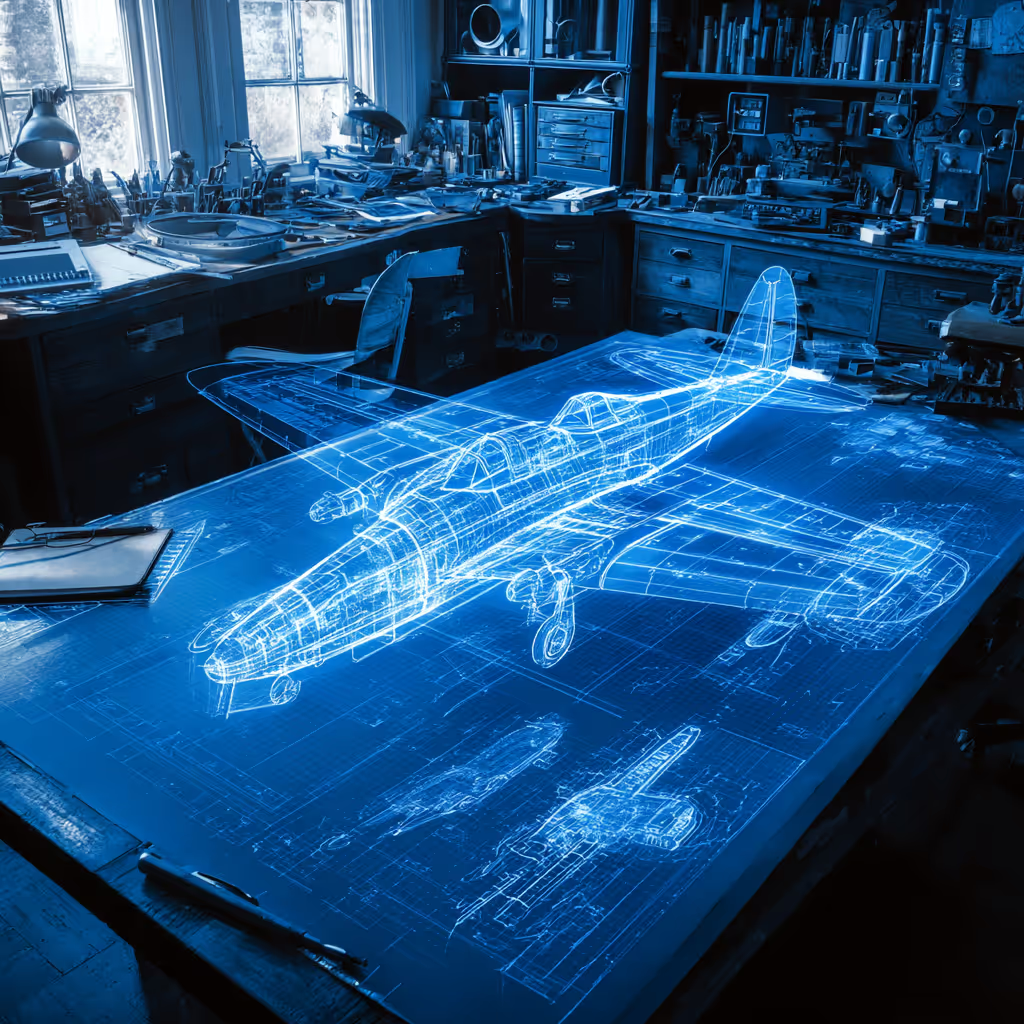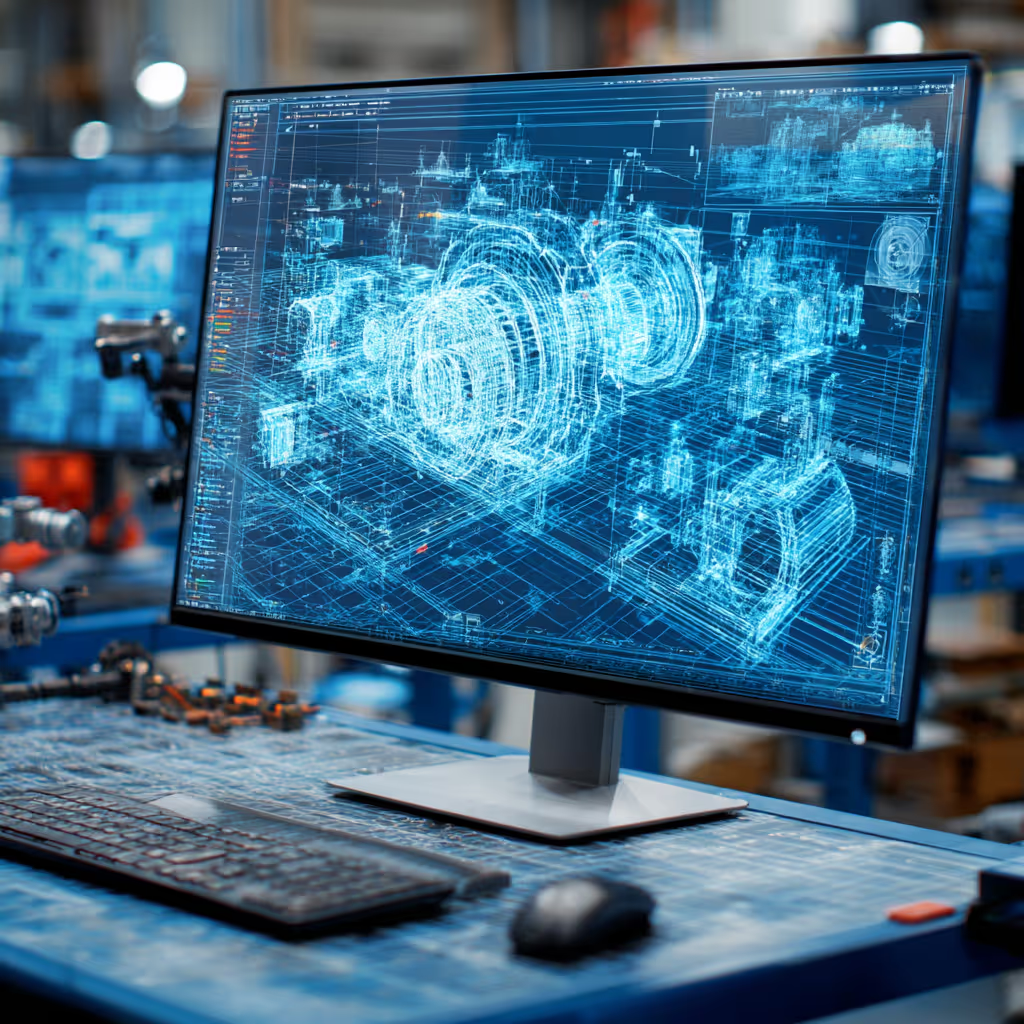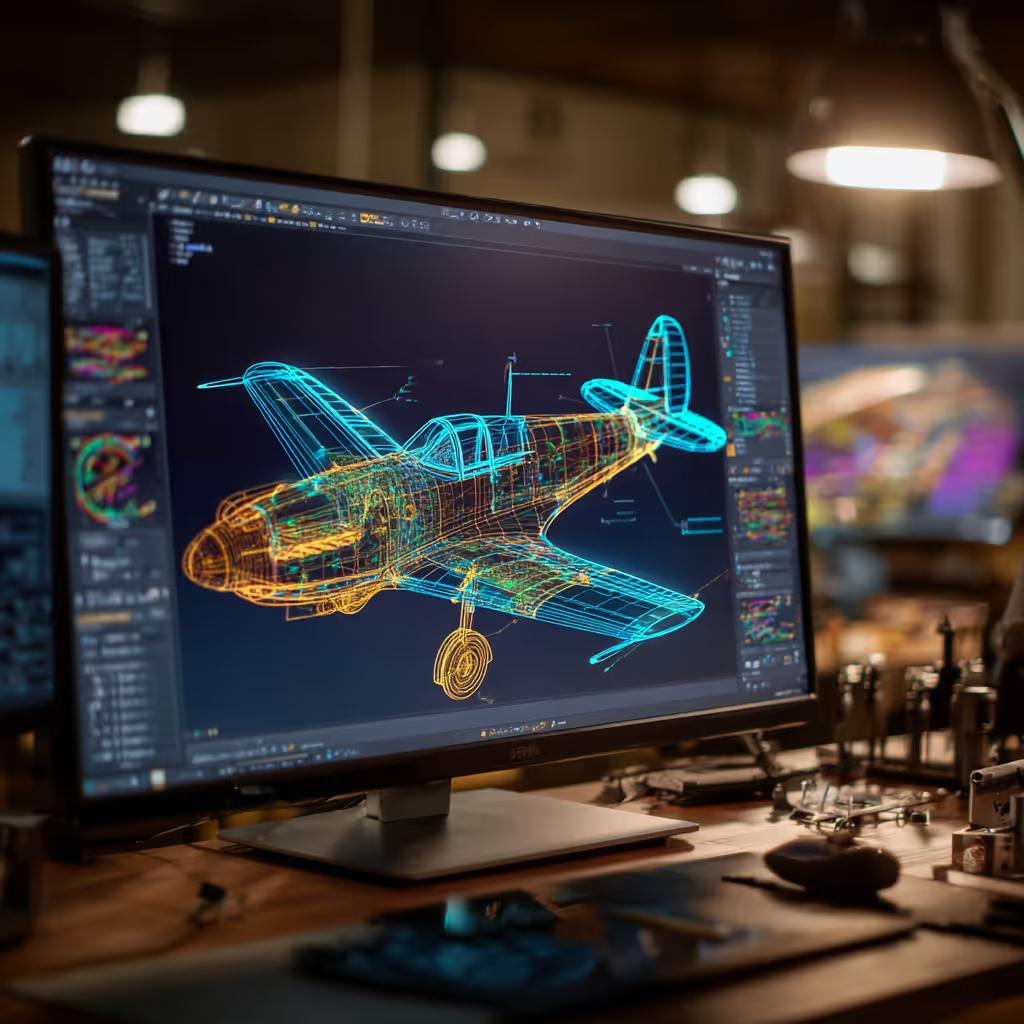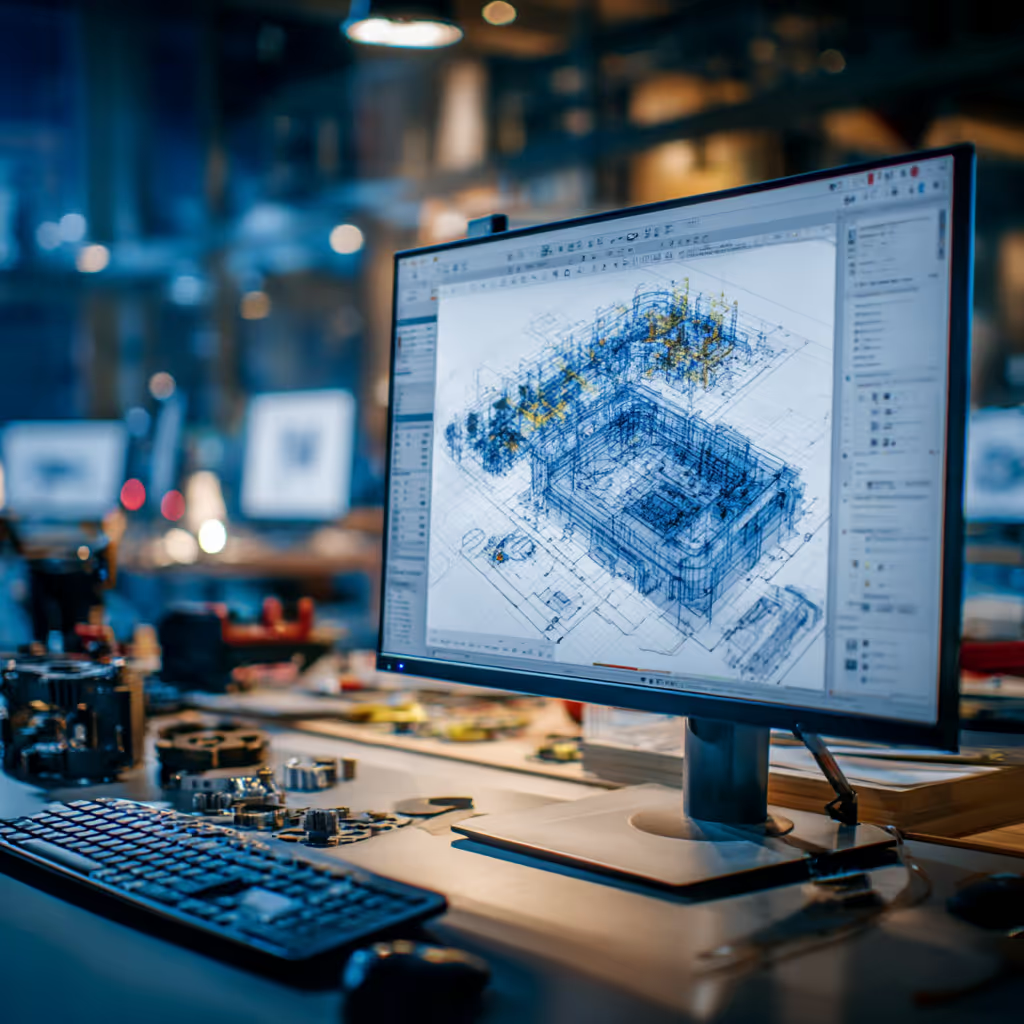Preserving Legacy Aerospace Designs: Why Digitizing Blueprints Matters

Our team has worked with a lot of major companies, and we’ve helped aerospace companies across the country digitize their legacy drawings and blueprints. It might not seem like a big deal, but digitizing old drawings can save your designs, allow you to optimize old parts, and update entire catalogs of parts.
Our team at CAD/CAM Services has the experience and qualifications that are required to achieve success with any aerospace CAD project. In this guide, you’ll learn more about how you can preserve your old designs, and how our team can help you save time and money during the process.
The Problem with Paper: Degradation, Inaccessibility, and Risk
We have seen a lot of companies run into issues with their paper drawings. The simple fact is that Mylar and paper-based blueprints are at risk for physical damage. Water damage, fire damage, and theft are some common issues we hear about.
In addition, your drawings can fade and smear over time, edges can start to tear, and drawings can eventually become too delicate to even handle.
When it comes to accessibility, it’s more of the same: it’s really hard to share a paper drawing with coworkers and suppliers, and finding a drawing can waste valuable time.
The Case for Digitization: Unlocking Engineering Potential
Since there are so many issues with physical drawings, it should be no surprise that a lot of people choose CAD/CAM Services to digitize their entire library of drawings. With our help, you can access drawings more easily, protect them from damage, and even update your legacy drawings.
Machine shops will be able to quote projects for you easier as well, since sharing drawings is as easy as sending an email.
From 2D Scans to 3D Models: How the Process Works
People think the process is a lot more difficult than it really is. Sure, it takes a certain attention to detail and time commitment, but our team at CAD/CAM Services makes the whole process stress-free.
It starts with a 2D scan. We use state-of-the-art 2D scanners and feed your physical drawings through them using delicate rollers. This creates a 2D PDF of your drawing, and that’s just the beginning.
From there, our engineers use whatever CAD program your team has access to, and we create native CAD files using the PDF as a reference. We have access to all major CAD platforms like SolidWorks, CATIA, Creo, Inventor, and many others.
We use the dimensions from your drawing to create accurate and functional 3D CAD models from scratch.
Challenges in Converting Aerospace Blueprints
If you try to digitize your legacy aerospace blueprints, you can run into some common issues. Missing dimensions, call-outs that don’t make sense, measurements that don’t add up, and relying on a hand scale to grab dimensions can be overwhelming. Even worse, strict aerospace accuracy requirements can make the whole process 100 times harder.
An experienced team like our guys at CAD/CAM Services has faced these issues thousands of times in the past, so we know how to work around common issues and get you the best final results.
Real Use Cases: Why Organizations Are Digitizing Now
In our experience, a lot of organizations are digitizing their old Mylar drawings and blueprints. We should know, because we’ve helped digitize millions of drawings at this point from companies in the aerospace sector and in various other industries.
The simple fact is that digitizing your parts makes it easier to adjust, share, fabricate, and reference every part. For many projects, digitization is a one-time effort that allows you to cash in on the benefits forever.
Cost-Efficiency and ROI Over Time
It’s hard to calculate an exact ROI that you can unlock by digitizing your aerospace drawings, but there are a lot of ways that you’ll save money. For starters, imagine the repercussions of a flood in your backroom full of drawings. You would lose all of your legacy drawings with no way of recovering them, and how do you put a financial figure on that?
In addition, digitizing your inventory makes it significantly easier and faster to get parts made. You can just share the CAD model with your machine shop of choice, and they’ll be able to generate a quote in no time.
Another way you’ll save money is by boosting the accuracy of your drawings. We’ve encountered a lot of drawings that had incorrect drawings that were messing up fabrication. Just a quarter of an inch in the aerospace industry can be the difference between an assembly that fits together perfectly and a pile of paperweights.
In short, digitizing your aerospace designs can save a ton of money over the lifetime of your parts.
Future-Proofing Aerospace Innovation
So much of the aerospace industry is about innovation and looking toward the future. With digitization, you’ll be able to future-proof your business and all of your designs thus far. It makes it easier to update a design and improve your catalog of parts.
With our help, you can start making a bigger difference.
Conclusion
At CAD/CAM Services, we’ve helped major aerospace companies digitize their legacy parts and create new 2D and 3D CAD models. We have all of the certifications and experience that your team needs, and we’re here to exceed your expectations. To help digitize your designs and much more, you can trust CAD/CAM Services. Get a free quote today.
Recent Posts


Tips for Picking the Perfect 3D CAD Viewer for Your Needs
This guide will teach you about 3D CAD viewers and outline considerations to make before picking the right one. We review 5 options and pick a clear winner.

How to Build an Aircraft Model by Converting 3D-Scanned STL Files into Functional 3D STEP Files
This in-depth guide will teach engineers how to use 3D-scanned aircraft files and transform them into manufacturable 3D STEP files with fewer mistakes.

“Extra Large” CAD Models – What It Means for SolidWorks, CATIA, and Siemens NX
This beginner’s guide will walk you through the problem with “extra large” CAD models, how it impacts your work, and some common ways to avoid them.
